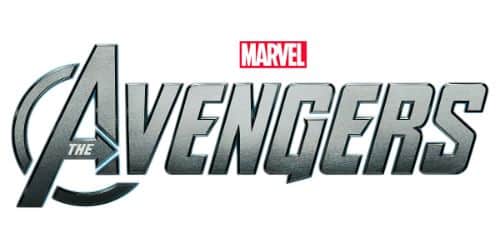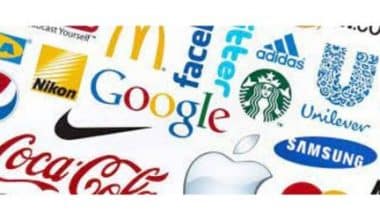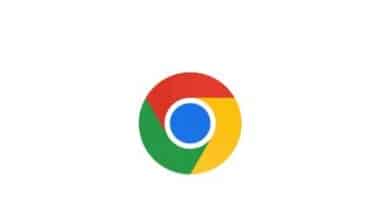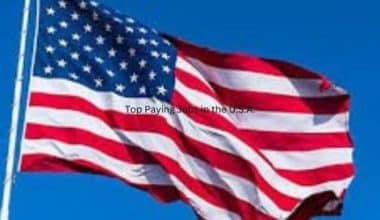The well-known Avengers logo with the “A,” also known as the “Big A” symbol, was created by renowned Marvel letterer Gaspar Saladino and unveiled in 1972.
It later served as the origin of the Avengers symbol used in the Marvel Cinematic Universe’s Avengers film series. Except for minor color changes, the Avengers logo hasn’t changed much since then.
The Avengers logo’s primary component is the “A” from “Avengers.” The letter “A” has been encircled to resemble the kind of badge frequently seen in superhero costumes. The Big A is shaped like an arrow representing development, momentum, tenacity, and resolves.
The Evolution of the Avengers Logo
In every iteration of the Avengers logo, the big “A” has an arrow pointing to the right. It endured all the changes made by the Marvel studio, and as a result, it represented the best Avengers action movies.
2012
The Avengers is a film from this period. The logo in the movie is the basic version recreated in all subsequent films. The large, uppercase “A” that makes up this design is what makes it stand out.
The letter has an arrow pointing to the right and a lengthened front leg. This aesthetic represents a direct, focused, and unyielding movement—exactly how the main Avengers characters are.
On the arrow, the bar is the word “THE” in tiny, thin uppercase characters. Additionally, the logo appears dynamic due to the placement of the letter A, which stands for “Avengers,” inside an open semicircle.
Another distinctive design element is the letter G, which has a substantial protrusion on the lower end. The middle planks of the letter “E” are then slightly cut, ending in a sharp point. The word “Marvel” is displayed in white against a red background at the top. The term “Avengers” has a slight rightward inclination throughout.
2015
The Avengers film from this period is Avengers: Age of Ultron. Even though there were minor changes, the logo remained unchanged. For instance, the metallic hue and the word “THE” have been eliminated; in their place, a burgundy-red color that resembles the background of “Marvel” has been added.
A reflection of the rising sun can be seen at the top of the “Big A.” This represents the faith in good triumphing over evil and offers hope for a happy resolution.
2018
The action film Avengers: Infinity War was introduced. This time, the circle surrounding the letter “A” was reduced, and the bottom portion was eliminated. “Avengers” was now easier to read, but the font remained oblique. To the right of the word “Marvel,” the prefix “Studios” was placed in a white, open rectangle with black lines at the bottom and top.
2019
The logo was unveiled in 2019 around the film Avengers: Endgame premiere. The bottom portion of the circle, which contains the letter “A,” was restored by the designers. Although the word “Endgame” is in italics, the color and gradient make it challenging to see.
The Avengers’ Individual Logo
Iron Man (Tony Stark)
The Iron Man mask and a more elaborate roundel insignia serve as logos. The show is made up of two sections and has a highly complex shape. The second Iron Man logo features two triangles enclosed in a roundel.
A sizable fist enclosed in a circle is the symbol for the Hulk. The background is black, and the first and the circles’ outlines are green. Additionally, a black and green Hulk radiation logo is included.
Chief America
Because of the star symbol and color scheme taken from the US flag, the Captain America logo has a patriotic appearance. The star’s size and the number of rings surrounding it have fluctuated slightly, but the symbol’s core patriotism has remained relatively constant.
Thor
The Thor logo is typically a hammer enclosed in a circle. Lightning strikes, and a three-leaf flower might or might not be engraved on the hammer.
White Widow Natalie Romanoff
The Black Widow logo has an hourglass shape in one variation, sometimes containing the black widow spider. Natasha Romanoff additionally wore a roundel emblem on her chest that featured a bird’s head and some of its wings.
Hawkeye
Given that the S.H.I.E.L.D. agent is a skilled archer, it makes sense that the Hawkeye logo would include a bow. Black and white can also be used as accent colors, with purple as the primary color.
How They Got the Name the Avengers
Since its founding in 1939, Marvel Comics has established itself as a market leader. It is now one of the two most recognizable brands in the industry, alongside DC Comics. The Avengers brand, a component of Marvel’s overall branding strategy, effectively unites numerous characters from various stories into a single continuity.
A diverse group of heroes band together to form The Avengers to combat formidable challenges. Their popularity is a team effort rather than the result of any one person. Many of the characters in the Avengers comics were, at best, tier 2 characters. Although it is hard to imagine a time before Iron Man became a household name, his comic books once barely sold. This is another aspect of the Avengers brand’s strength. The brand’s core message is about the power of unity and teamwork in overcoming challenges. The brand values emphasize collaboration, community, and teamwork.
Marvel is aware of this, which explains why the actors are frequently portrayed as one big family around the movies because they live up to the Avenger’s reputation. In large groups, they appear on talk shows where they joke around like siblings. They participate in a community by attending events, interacting with fans, and being members of the actor fraternity (who are a massive part of the brand in their own right). As an actual demonstration of their sense of community, many movie actors frequently visit children’s hospitals. Kids adore it because they get to interact with real superheroes.
The intended market
The audience, or the fans, is the brand’s final and most crucial component. Marvel makes a great effort to involve the fans in the events because they are aware of the sizeable and devoted fan base they have. To make the Avengers movies outstanding, they attempt to keep secrets, but they are also mindful that their audience is why these were created. This indicates that they attend fan events frequently and engage with their real fans instead of journalists and talk show hosts. This gives the brand the appearance of a team and a community, strengthening its reputation with customers.
Because it is accessible to everyone, the Avengers brand is vital. Through community and cooperation, it tries to give those in need strength and hope. People are drawn to the movies for reasons other than the fact that they are aesthetically and critically superior. They attract people because they are exciting and inclusive. The Avengers’ true power lies in this.
Elements of the Avengers Logo Design
Typeface: “Avengers” is written in a distinctive font that emphasizes the initial letter. The letter “A” is enclosed and given an arrow in the horizontal bar that connects them. The movie series’ name is written in capital letters and slopes slightly to the right. The “G” has an additional notch beyond the bottom margin.
Color
The color scheme for the Avengers logo can be either simple or graduated. Its primary colors are black, navy blue, metallic-shiny grey, red, burgundy, brown, and beige.
The primary Avengers logo’s color scheme has undergone numerous changes throughout the film. From orange and yellow, it has changed to neon blue, red, and light grey. The reason is quite simple: it’s not the kind of logo where color plays an essential part. The logo’s color palette has always been adjusted to match the colors of the surrounding visual environment.
For instance, the logo white, light grey, and blue gradient on the movie poster for the 2012 film perfectly complement the sky, the buildings, and the heroes’ costumes’ various shades of grey. Contrarily, purple hues were chosen for the logo because they predominate on the 2019 movie’s poster.
Avengers Logo Font
A distinctive font is used to write the word “Avengers,” emphasizing the first letter. The letter “A” is enclosed and given an arrow in the horizontal bar that connects them. The movie series’ name is written in capital letters and slopes slightly to the right. The “G” has an additional notch beyond the bottom edge.
The History of the Avengers
The Avengers refers to a fictional superhero team in U.S. comic books written by Marvel Comics. This team debuted in the first Avengers comic book in September 1963, created by artist/co-plotter Jack Kirby and writer-editor Stan Lee.
Superhero teams have existed since the earliest period of superhero comics. After all, the first superhero team was the Justice Society of America, which debuted in the third issue of All-Star Comics in the winter of 1940 and 1941. As for why this happened, it seems safe to say that superhero fans in those times enjoyed stories featuring their favorite characters interacting with one another in the same way that superhero fans in these times enjoy the same, thus making it a smart commercial move.
By the time Stan Lee and Jack Kirby created the Avengers in the early 1960s, superhero teams weren’t a brand-new idea. But the two didn’t decide to form a brand-new superhero team at random. The Justice League of America, a kind of reimagining of the Justice Society of America that had been discontinued when superhero comics became less and less prevalent in the 1940s, was instead the focus of a new comic book series published by DC Comics.
Read Also: NIRVANA LOGO: Where Does thе Smіlеу Fасе Cоmе From?
Due to the success of said comic book series, Martin Goodman, the owner of Timely Comics, asked Lee to create something comparable. As a result, Lee and Kirby combined several of their already-existing superheroes, resulting in the 1963 Avengers lineup that included Thor, Iron Man, the Hulk, the Wasp, and Ant-Man. Despite his iconic status, the first Captain America wasn’t added to the comic book series until the fourth issue, so he wasn’t part of the original lineup.
The Avengers have gained a lot of popularity since then. There is no better indication of enduring popularity than a major comic book series published on a more-or-less consistent basis since 1963. There have also been a ton of spinoffs, including other comic book series and other works in other media. The more than 20 films that make up the Marvel Cinematic Universe deserve special attention. After all, those films might not be primarily focused on the Avengers and nobody else. However, the term given to the major crossover films proves beyond a shadow of a doubt that the aforementioned group has functioned as its focal point.
What Evolution Has Been Seen in the Avengers Logo?
It took a while before the Avengers logo, which is most frequently used today, was created. But it had several forerunners. For instance, it might be argued that The Avengers’ first issue’s title qualifies as the Avengers logo’s original design. If so, it isn’t spectacular, considering it was only “The Avengers” written in white letters over their shadows. Even still, it has a slightly unorthodox vibe, which is appropriate given the fundamentals of superhero culture. This can be attributed in large part to the lettering’s font.
Later, the Avengers had a different emblem that read “The Mighty Avengers” in letters. The fact that the letters curved in from both sides helped this logo stand out while sharing some characteristics with its forerunner. Something that contributed to both a heightened sense of dynamism and emphasis.
Having said that, while each of these Avengers logos was passable enough, none stood out. As a result, although these two have been modified for various items, interested parties today should be most familiar with the modifications based on a third version of the Avengers logo.
To put it briefly, this resulted from Gaspar Saladino asking the author Sol Brodsky whether he desired a new Avengers emblem in the early 1970s. Brodsky immediately agreed because he didn’t like the first logo and didn’t care for the second one, so Saladino was forced to come up with a new one. Soon enough, Brodsky was able to secure Lee’s approval, and as a result, versions of it are currently the most recognizable iteration of the Avengers logo.
Read Also: CROCS LOGO: Meaning, Why the Crocs Logo Is a Crocodile and History
It’s not that difficult to speculate as to why that occurred. According to Brodsky, the Avengers logo’s third iteration is the only one with personality. For example, the rightward slant of its letters helps it maintain some dynamism. The font’s appearance, the letters’ thickness, and the black used to outline everything help to counteract that with a sense of solid strength.
Additionally, the letter A’s crossbar, which is shaped like an arrow, adds a little extra visual interest to the third version, which helps to reinforce the overall impression the other elements create. The different versions are bland in comparison and even resemble stereotypes of what the titles of comic book series with superhero themes ought to look like. They may, in some ways, be the victims of their success because they are primarily responsible for defining what a superhero-themed comic book series should be like. However, they cannot get around this issue because they lack any particularly memorable elements.
Whatever the case, the Avengers logo used in the Marvel Cinematic Universe is unmistakably a ripoff of the third iteration. To be precise, the “A” from “Avengers” serves as its focal point. However, that “A” has been enclosed in a circle, making it a badge similar to those frequently found in superhero costumes. The outcome is easy to understand. But even so, it accomplishes its objectives adequately, which is fine because sometimes logos don’t require much more. Considering that these films are intended to be straightforward blockbusters aimed at the general audience, one could argue that simple is particularly well-suited to them.
How the Avengers Started Out
The Avengers were established to combat all evil forces attempting to upset the universe’s delicate balance. The founding of the Avengers and its members were entirely different in movies and comics.
Avengers Creation in the Marvel Comics and Marvel Cinematic Universe
Thor was the tool Loki used to bring about the destruction of Earth. However, the Avengers defeated the lord of evil, Loki, thanks to help from Iron Man, Ant-Man, and other heroes.
Once Loki’s threat had been removed, Ant-Man suggested that since the superhero team had a great working relationship, they should be designated as the official superhero team. Wasp floated the idea of calling themselves the Avengers.
In the Marvel Cinematic Universe, Loki, the lord of mischief, brought the first intergalactic global threat to New York.
Loki came to control Tesseract and use his Chitauri soldiers to destroy planet Earth. After claiming the Tesseract, ex-S.H.I.E.L.D. Member Nick Fury assembled the world’s greatest heroes to form the Avengers team.
With the likes of Iron Man, Hulk, and Thor, these Avengers could fend off Loki and his legions of soldiers, defend New York, and ultimately make their film debut.
Comic Book Appearances of the Avengers
The Marvel comic book universe debuted The Avengers in 1963. Since then, Marvel has produced hundreds of editions of Avengers comic books that feature the superheroes of the Avengers taking on the main threats to Earth.
Here are some of the Avengers’ most notable appearances in Marvel Comic Books in case you’re curious about the kinds of supervillains and threats the Avengers have frequently encountered.
Loki and the Avengers
Because Loki schemed to wipe off the Earth, the Marvel Avengers debuted in comic books. In this battle, the original Avengers superheroes defeated Loki and established a group that defeated universe-level evils worldwide.
Astonishing Secret Wars
The Avengers Secret Wars antagonist Beyonder is a cosmic being who has his sights set on people and travels to Earth to learn and gain enlightenment. He attempts to rule the globe, but the Avengers team stops him.
The conquering Kang
One of the Avengers’ deadliest and most formidable foes, Kang the Conqueror, arrives on Earth to conquer it, but the Avengers’ collective efforts prevent him from carrying out his plans.
Infinity Sword
The soul gems, the irrational Titan Thanos, and his infinity gauntlet were all featured in infinity gauntlet comics. The Avengers confronted Thanos and this Black Order to save the universe and the lives of at least half of humanity.
Marvel versus. X-men
The Avengers and X-Men conflict about why the Phoenix Force is heading toward Earth, and they ultimately engage in combat. This outcome was one of the most significant crossover events in the history of Marvel Comic Books. These two sides have always given as much as they have received, and in some Marvel Comic Books, some X-Men have even joined the Avengers.
The Marvel Cinematic Universe’s appearance of the Avengers
Due to the oomph factor, it sports thanks to the fantastic CGI, excellent plots, and exceptional cast selections. The Marvel Cinematic Universe is enormously popular with superhero comic book enthusiasts and conventional movie lovers.
The Avengers superheroes made a few appearances in the Marvel Cinematic Universe’s 24-movie series, which ended with the Infinity Saga.
The Conflict
This film’s central conflict occurs in New York between Loki and the Avengers. In his quest to rule the planet Earth, Loki intended to use The Battle of New York as one of his many assaults. Loki’s plans, however, were foiled when the Avengers defeated his Chitauri soldiers and captured him. The first installment of the Avengers series was the action-packed Battle of New York.
Ultron Age
In the second Avengers movie, Tony Stark unintentionally creates Ultron and battles Ultron with his army of robots. The Avengers in this film created a Vision using J.A.R.V.I.S. and a mind stone. In Age of Ultron, Quicksilver and Scarlet Witch both made an appearance.
Civil War
Despite not being an Avengers film, Captain America: Civil War included most of the superheroes who split up following the Sokovia incident in the Age of Ultron. They engaged in conflict over the nationalization of Avengers and came to a standstill.
Apocalypse War
The Wakanda War against his Chitauri army was depicted in the Avengers: Infinity War movie and Thanos assembled all of the infinity stones into his gauntlet. After Infinity War, Thanos killed several superheroes and erased half of their existence with the snap of his fingers.
Final Act
The other Avengers intended to repair the harm done by the lethal snap after the events of the Infinity War movie.
The Avengers could travel back in time because Tony Stark discovered the time travel flaw and Ant-Pym Man’s particles.
By snapping their fingers, they brought everyone back to life and were able to retrieve all of the infinity stones. Sadly, Thanos was also given a second chance at life. As a result, the mother of all wars broke out, in which Iron Man destroyed Thanos and his entire army using Thanos’ preferred method—the snap of his fingers.
Conclusion
The Avengers logo is now a well-known icon in the comic book industry, and many people have grown fond of it over time.
The Marvel Cinematic Universe has attracted new followers and reignited interest in the Marvel Comics brand thanks to the Avengers logo.
Related Articles
- Iron Man Logo: The Evolution & What It Symbolizes
- PUNISHER LOGO: The True Meaning of the Controversial Logo, Revealed!!!
- WARNER BROS: History, Origin, and Recent Developments
- Hogwarts Logo: The True Meaning of the Logo & What You Need
- Black Panther Logo: What Does it Represent? Detailed History






